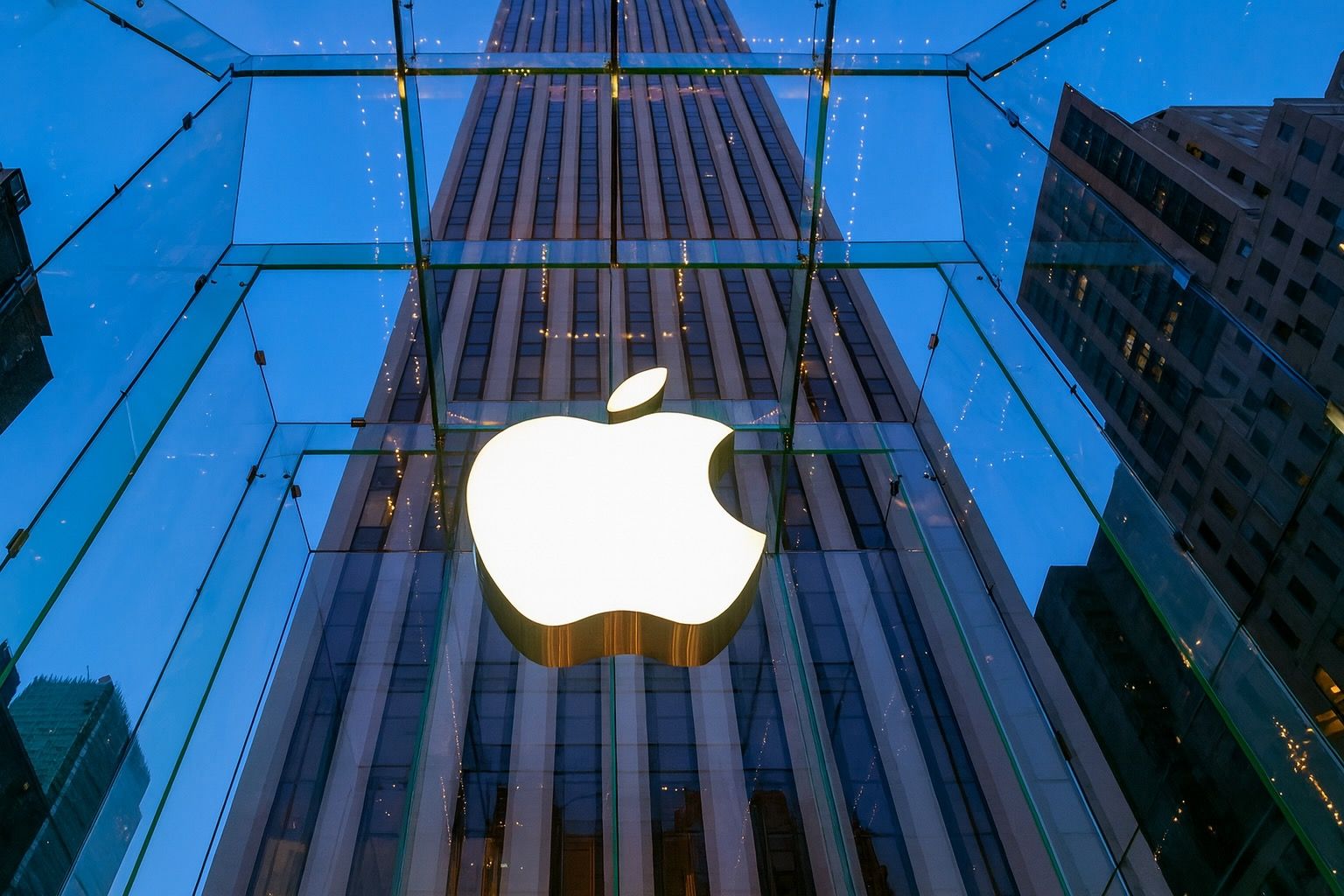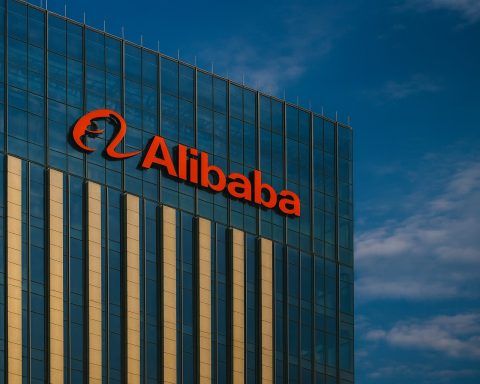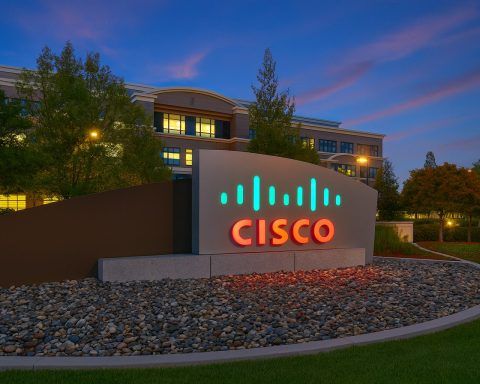November 14, 2025 – After U.S. Market Close
Apple stock today: price, move, and key levels
Apple Inc. (NASDAQ: AAPL) finished Friday’s session just above $272 per share, slipping roughly 0.2% on the day after a choppy trading session. [1]
- Regular-session close: around $272.4–$272.5
- Intraday range: roughly $269.6 (low) to $275.9 (high) [2]
- Volume: about 46–47 million shares, slightly above the recent average of ~46.5 million. [3]
Even with today’s modest dip, Apple stock remains less than 2% below its recent record closing high of $275.25 set on November 11, 2025, and within a tight band of its 52‑week high near $277.32. [4]
On valuation, Apple’s market capitalization is hovering around the $4.0 trillion mark, keeping it in the ultra‑exclusive club of the world’s most valuable companies alongside Nvidia and Microsoft. [5]
Broadly, U.S. equities closed mixed. The Nasdaq Composite edged up about 0.1%, the S&P 500 slipped around 0.1%, and the Dow Jones Industrial Average fell roughly 0.7%, as Wall Street continued to wrestle with lofty tech valuations and shifting expectations for Federal Reserve rate cuts. [6]
China iPhone 17 sales jump 22% – the headline bullish catalyst
The single biggest Apple-specific headline today came out of China.
A Reuters report based on Counterpoint Research data showed that iPhone sales in China rose 22% year-on-year in the first month after the iPhone 17 launch, covering the period from the September 19 release. [7]
Key details from that survey:
- The iPhone 17 family accounted for nearly four-fifths of Apple’s smartphone units sold to Chinese consumers during that first month.
- By contrast, sales fell about 5% in the first month after the iPhone 16 launch in 2024, underscoring how much stronger this cycle is. [8]
- The broader Chinese smartphone market actually shrank 2.7% in the third quarter, meaning Apple is gaining share in a contracting environment. [9]
For Apple’s China story—recently a major concern for investors—this is a meaningful reset. The data suggests:
- The iPhone 17 lineup is resonating with Chinese consumers, despite intense competition from local brands such as Xiaomi and Huawei. [10]
- Stronger China demand supports Apple’s record iPhone revenue reported for its September quarter and strengthens the bull case going into the holiday season. [11]
From a stock perspective, the China data helps justify AAPL’s near-record trading range and underpins analyst arguments that worries about a structural demand collapse were overdone—at least for now.
Regulatory overhang: Apple Watch import ban threat comes back
Balancing the China good news, Apple picked up a fresh regulatory headache today.
The U.S. International Trade Commission (ITC) announced it will open a new proceeding to determine whether redesigned Apple Watch models should be banned from import as part of its long-running patent dispute with medical-technology company Masimo. [12]
Important points from the ITC’s order:
- The inquiry focuses on whether Apple’s updated blood‑oxygen measurement feature—introduced after a previous ban—still infringes Masimo’s patents. [13]
- The ITC set a target of six months to complete the new investigation. [14]
- Apple argues the case is “meritless” and claims Masimo has copied its smartwatch design. Masimo, meanwhile, is suing in multiple venues and seeking up to $749 million in damages in one ongoing jury trial. [15]
For shareholders, the immediate impact on revenue is likely limited—Watch is a smaller line than iPhone—but the case:
- Adds legal uncertainty around a key health feature that Apple has leaned on in marketing.
- Reinforces a broader theme: Apple’s hardware innovation is increasingly intertwined with patent disputes and regulatory scrutiny.
That perception can weigh on the valuation multiple even if the direct financial risk is manageable.
Legal pressure: Apple and OpenAI must face X Corp’s antitrust lawsuit
Another legal front also moved against Apple this week and remained in focus today.
A federal judge in Texas refused to dismiss a lawsuit filed by Elon Musk’s X Corp and xAI against Apple and OpenAI, allowing the case to proceed—for now. [16]
According to the judge’s order and Reuters’ summary: [17]
- X and xAI allege that Apple violated U.S. antitrust law by exclusively integrating OpenAI’s ChatGPT into Apple Intelligence features on iPhones and other devices, allegedly shutting out rival chatbots.
- The suit also claims Apple boosted ChatGPT’s prominence on its App Store “Must‑Have Apps” list while sidelining competitors, including Musk’s Grok.
- Apple argues the OpenAI partnership is not exclusive and that other chatbots remain widely available via apps and browsers, telling the court that “choosing one partner first is not unlawful.”
The judge stressed that this early ruling is not a decision on the merits, but it ensures discovery will move ahead and keeps antitrust and AI‑monopoly narratives firmly attached to Apple for months to come. [18]
For investors, the headlines:
- Increase headline risk around Apple’s AI strategy and its deals with OpenAI.
- Reinforce the broader theme that Big Tech AI partnerships are squarely in regulatory crosshairs worldwide.
New revenue levers: Mini apps, WeChat, and Apple Pay Desktop
While regulators tighten the screws, Apple is quietly opening up new monetization avenues in its services business—another key storyline for AAPL today.
Mini Apps Partner Program – lower fee, bigger opportunity
Apple this week formally rolled out its Mini Apps Partner Program, cutting the App Store commission from 30% to 15% for web‑based “mini apps” that integrate certain Apple services (payments, age verification, etc.). [19]
Mini apps—often built in HTML/JavaScript and embedded within super‑apps like WeChat or Discord—let users access services without installing a full standalone app. Apple’s move aims to:
- Encourage deeper integration of these mini apps into the iOS ecosystem.
- Respond to regulatory pressure around App Store fees while still keeping developers inside Apple’s payments and identity stack. [20]
A Morgan Stanley note highlighted by MacDailyNews framed the program as “a clear positive” for Apple, estimating it could add around $800 million in annual App Store revenue from WeChat/Weixin alone, boosting FY26 Services growth by roughly 80 basis points. [21]
Taken together with the iPhone 17 momentum, this supports the narrative that Services and ecosystem monetization can continue to fuel Apple’s top-line growth even as iPhone units mature.
Apple Pay Desktop and the broader services flywheel
Separately, UBS analysts reiterated today that Apple Pay Desktop adoption is picking up across major U.S. online retailers, and they expect usage to accelerate after the holiday season, potentially putting further pressure on entrenched payment players such as PayPal. [22]
This dovetails with Apple’s own Q4 FY2025 earnings, where the company reported: [23]
- Revenue of $102.5 billion, up 8% year-on-year.
- Diluted EPS of $1.85, up 13% year-on-year on an adjusted basis.
- A record September‑quarter Services revenue and record iPhone revenue.
- A quarterly dividend of $0.26 per share, payable November 13, 2025.
The take-away: today’s scattered services headlines (mini apps, WeChat revenue share, Apple Pay Desktop) are all small pieces in a much larger story—Apple is methodically expanding its high‑margin Services engine, which supports a premium valuation even as hardware growth slows.
What Wall Street is saying about Apple after iPhone 17 and earnings
Analyst commentary out today and this week shows a healthy split between cautious realists and unabashed bulls.
According to Insider Monkey’s roundup: [24]
- Jefferies reiterated a Hold rating on November 10, arguing that global iPhone volumes may have already peaked, even though China demand for iPhone 17 looks “super strong” and driven largely by pricing.
- J.P. Morgan maintained a Buy rating on November 6, citing robust iPhone 17 demand, particularly for the base model, and pointing to elevated lead times in multiple regions as a sign of strong consumer interest.
On the valuation and fundamentals side, a new Simply Wall St analysis published today notes that: [25]
- Apple shares are up about 10.2% over the past month and 20.1% over the past year.
- A discounted cash flow (DCF) model suggests an intrinsic value around $223.75 per share, implying the stock is roughly 22% above that estimate—“overvalued” by that method.
- However, Apple trades at a price-to-earnings ratio near 36x, above the tech sector average (~23x) but below a “fair” PE of ~44x that Simply Wall St’s model assigns given Apple’s growth and quality metrics, which leads them to a more constructive view when using earnings-based comparisons.
Meanwhile, MarketScreener’s consensus summary still shows an overall “Outperform” rating from roughly 48 analysts, with an average target price near $281, only a few percent above current levels—suggesting limited near‑term upside but no major conviction in a sharp pullback either. [26]
In short, Wall Street is split between “great company, stretched price” and “premium story still reasonably priced for its growth and moat.”
Valuation check: AAPL in the AI-driven mega-cap club
The broader market context matters here. Tech megacaps—the so‑called “Magnificent Seven,” including Apple—have done much of the heavy lifting for the 2025 equity rebound. [27]
MarketMinute’s analysis today highlights that: [28]
- The S&P 500 is up ~15.8% year-to-date, while the Nasdaq Composite has gained about 19.8%, largely powered by AI‑related enthusiasm.
- The Magnificent Seven (Apple, Microsoft, Nvidia, Alphabet, Amazon, Meta, Tesla) have surged roughly 22% year-to-date, and about 64% since the April 2025 market bottom, concentrating market gains in a small cluster of mega-caps.
Within that context:
- Apple’s PE in the mid‑30s is well above the S&P 500’s ~25x, a fact some commentators frame as evidence of “relative valuation extremes.” [29]
- At the same time, Apple’s massive free cash flow, $4T‑class market cap, and record earnings give bulls confidence that the company can grow into that multiple—especially if AI‑integrated features, services, and new form factors (like Vision Pro) gain traction over the next 3–5 years. [30]
Simply Wall St’s fair‑value “narratives” reflect that split: some bullish scenarios set Apple’s fair value around $275+, roughly in line with today’s price, while more conservative cases land closer to the low‑$200s. [31]
How Apple fit into today’s choppy market session
Friday’s market action was classic late‑stage‑rally behavior:
- Stocks opened weak, especially in tech, on ongoing worries that the Fed might slow or pause further rate cuts amid uncertain economic data. [32]
- By the close, the Nasdaq and S&P 500 had clawed back to finish roughly flat, while the Dow saw a more pronounced decline. [33]
Apple’s own trading mirrored that pattern:
- Shares sold off early alongside other richly valued tech leaders.
- As dip‑buyers stepped in—helped by the supportive China iPhone 17 data and continued optimism around services—AAPL bounced off intraday lows near $270 and settled just slightly below Thursday’s close. [34]
In other words, Apple traded like what it is: a core “quality tech” and AI ecosystem name that investors buy on weakness, but are increasingly cautious about chasing at fresh all‑time highs.
Key takeaways for AAPL investors after November 14, 2025
Putting today’s news flow together, here’s how the picture looks:
Bullish forces
- China rebound: iPhone 17 drove a 22% year-over-year surge in China iPhone sales, outpacing a shrinking broader market and alleviating one of the largest macro worries hanging over AAPL. [35]
- Services momentum: Apple is expanding high‑margin Services via the Mini Apps Partner Program, deeper WeChat integration, and growing Apple Pay Desktop usage—all atop record Services revenue reported in Q4 FY2025. [36]
- Financial strength: Q4 results showed 8% revenue growth and 13% adjusted EPS growth, plus ongoing dividends and buyback capacity, underscoring the company’s durable cash machine. [37]
- Scale and AI positioning: Membership in the $4T market‑cap club, AI‑enhanced products, and a vast installed base give Apple strategic optionality that few companies can match. [38]
Risk factors
- Legal & regulatory pressure:
- Valuation:
- AAPL trades at a premium multiple, with some DCF models flagging it as 20%+ above estimated fair value and commentators worrying about an AI‑driven “earnings bubble” across mega‑cap tech. [41]
- iPhone maturity debate:
- Jefferies’ view that iPhone unit volume has likely peaked underscores the longer‑term question: how long can Apple rely on incremental upgrades and pricing power before it needs another product category on the scale of iPhone or Services? [42]
Bottom line
As of the close on November 14, 2025, Apple stock is trading near record highs with a rich but not unprecedented valuation, supported by:
- A better‑than‑feared iPhone 17 cycle in China,
- A rapidly expanding services franchise, and
- A market that continues to reward mega‑cap AI‑adjacent names.
At the same time, legal risks, regulatory scrutiny, and valuation questions mean that the path forward is unlikely to be a straight line, even for a company of Apple’s scale and brand power.
For investors already following AAPL, today’s news flow mostly reinforces the existing narrative: Apple remains a high‑quality, cash‑rich franchise benefiting from strong demand and an ever‑stickier ecosystem—but one that the market is also pricing as such.
Disclaimer: This article is for informational and educational purposes only and does not constitute financial advice, investment recommendation, or an offer to buy or sell any securities. Always do your own research or consult a licensed financial advisor before making investment decisions.
References
1. stockanalysis.com, 2. stockanalysis.com, 3. www.investing.com, 4. www.macrotrends.net, 5. www.ft.com, 6. www.nasdaq.com, 7. www.investing.com, 8. www.investing.com, 9. www.investing.com, 10. www.investing.com, 11. www.apple.com, 12. www.reuters.com, 13. www.reuters.com, 14. www.reuters.com, 15. www.reuters.com, 16. www.reuters.com, 17. www.reuters.com, 18. www.reuters.com, 19. in.marketscreener.com, 20. in.marketscreener.com, 21. macdailynews.com, 22. www.proactiveinvestors.com, 23. www.apple.com, 24. www.insidermonkey.com, 25. simplywall.st, 26. in.marketscreener.com, 27. markets.chroniclejournal.com, 28. markets.chroniclejournal.com, 29. markets.chroniclejournal.com, 30. www.apple.com, 31. simplywall.st, 32. www.nasdaq.com, 33. www.nasdaq.com, 34. stockanalysis.com, 35. www.investing.com, 36. in.marketscreener.com, 37. www.apple.com, 38. www.ft.com, 39. www.reuters.com, 40. www.reuters.com, 41. markets.chroniclejournal.com, 42. www.insidermonkey.com







